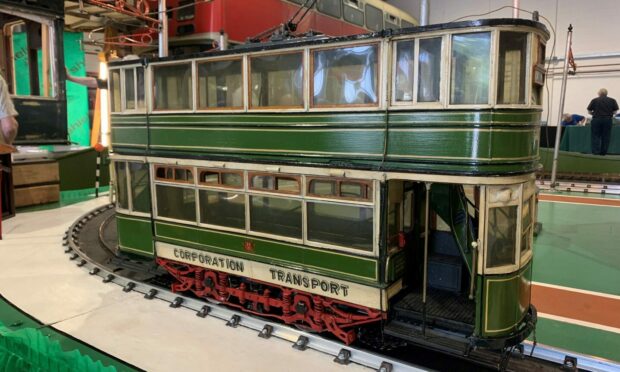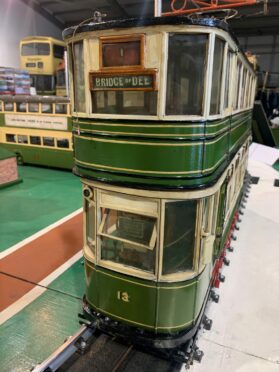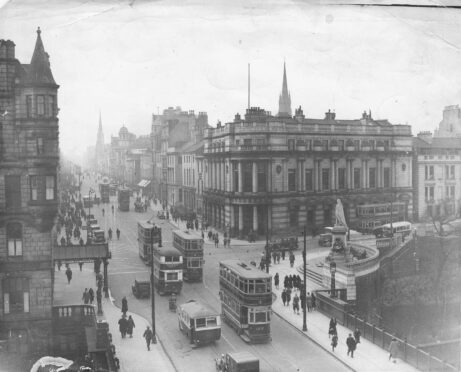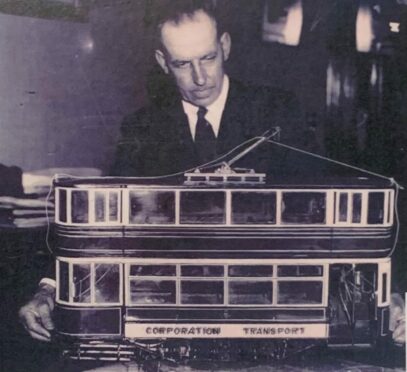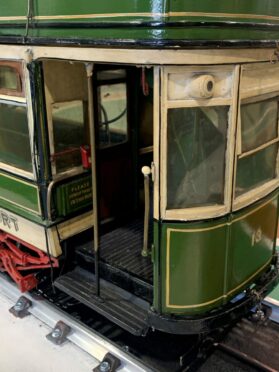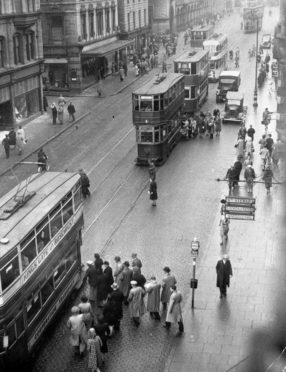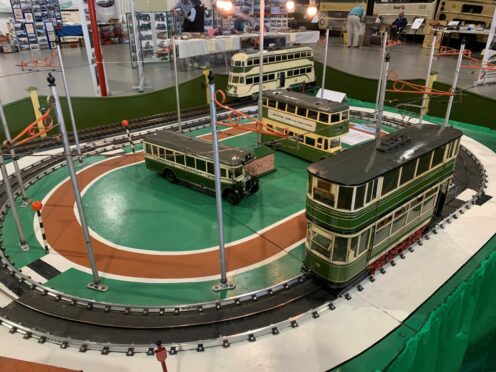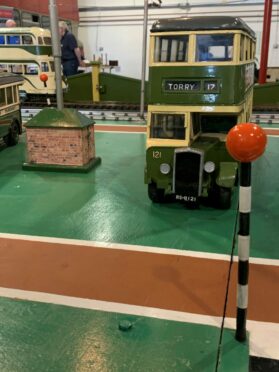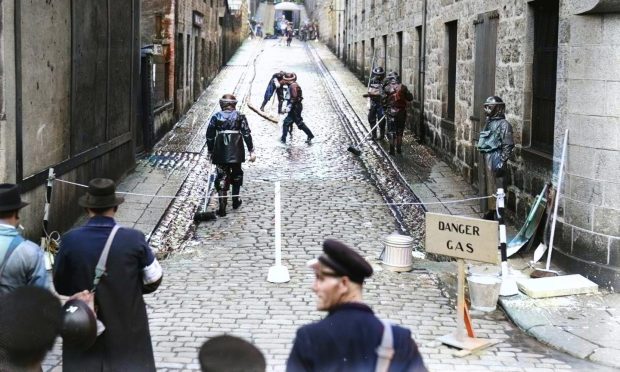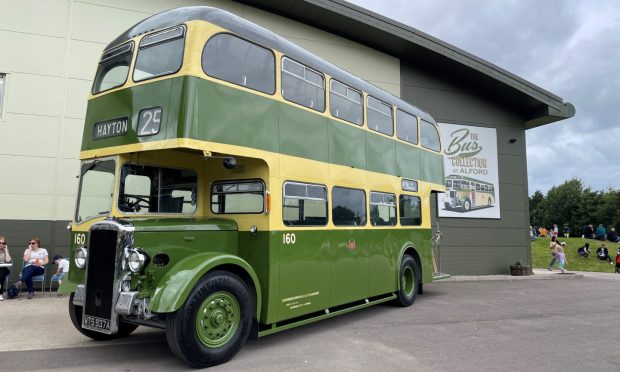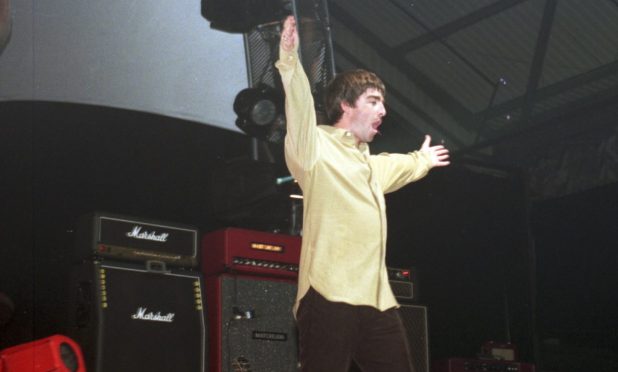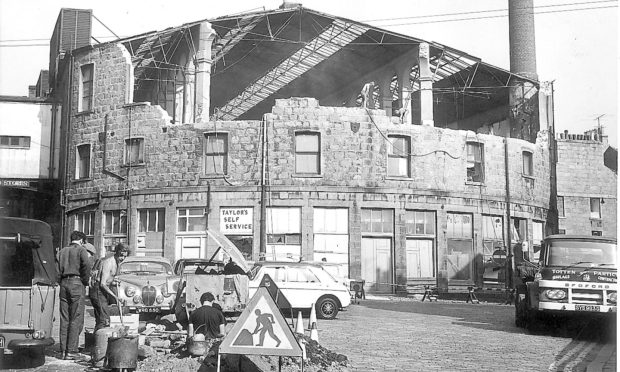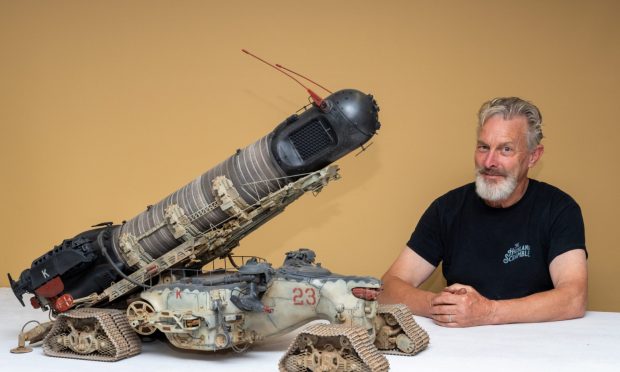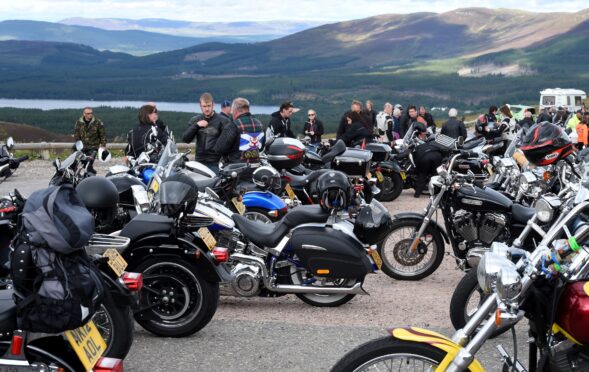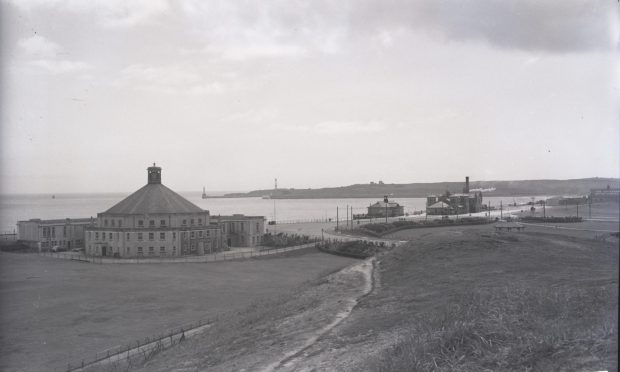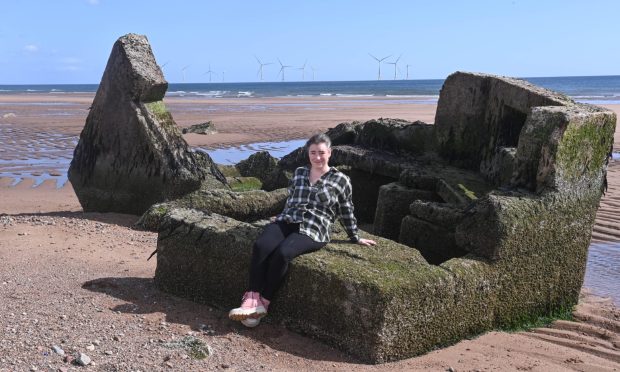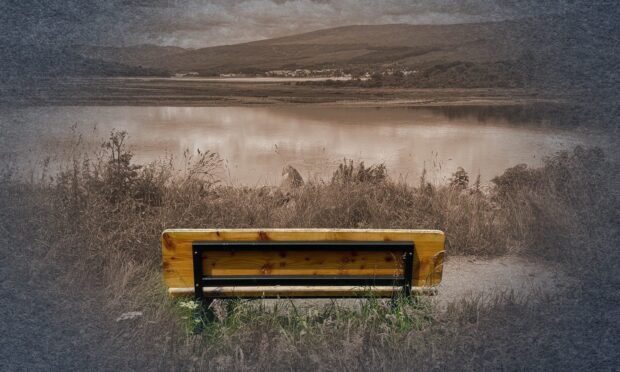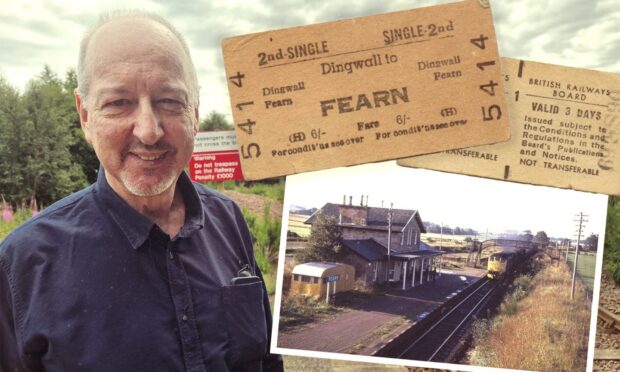Peek through the tram windows and you’ll see rows of seats, waiting to carry passengers along the streets of Aberdeen.
There are brass handrails, grasped by generations of Aberdonians as the vehicle trundled through the city.
The steps at either end would echo with the stamping feet of children racing up to the top deck for the seat at the front.
Except this immaculate 85-year-old tram has never carried passengers.
In fact, it is only 13 inches high.
And while it may look like a toy any child would be delighted to get their hands on, this model tram served a serious purpose in determining the cause of road accidents in Aberdeen.
Increase in Aberdeen tram accidents
Trams were an established part of Aberdeen’s infrastructure after the first horse-drawn tramway opened in 1874.
By the 1930s, Aberdeen’s increasingly busy streets were shared by pedestrians, cyclists, horses, trams, buses and motorcars, and incidents were becoming more frequent.
On an almost weekly basis, newspapers carried grim reports of tram accidents.
Unfortunately, the severity of collisions also saw a rise in the number of cases and fatal accident inquiries coming before the city’s courts.
Nowadays, such inquiries can use video footage and detailed reconstructions to help courts understand the sequence of events during an incident.
But in the early 20th Century, before the advent of technology, it was difficult to explain the mechanisms of vehicles involved in Aberdeen’s street accidents.
Model was solution to court’s problem
How could you visually demonstrate the complex technical aspects of a vehicle without dragging a courtroom to a tram shed?
The solution was a simple, but ingenious one.
Allan Kennedy, works superintendent at Aberdeen Transport Department, suggested a model could be used during court proceedings.
An experienced employee, he worked for the transport department from 1918 until his death aged 56 in 1944.
In 1938, he painstakingly made a miniature Aberdeen tram out of spare materials from the tram works.
A talented model-maker, Mr Kennedy’s attention to detail was exquisite.
Perfect petite replica of city’s trams
Built to a scale of one foot to one inch, it stands at 30 inches long and 13.5in high.
The gleaming bodywork is fashioned from the same wood that was used to make and repair the bodywork of the city’s trams.
The fully-functioning windows are made from celluloid, not glass, but the handrails really were made from brass.
Everything about the model is perfectly petite and in proportion – from the the curved staircases at either end, to the hand-painted destination boards on the front.
And remarkably, like the real-life 30-ft long trams that dwarfed it – the backs of the seats on the upper deck swung backward and forward, for the tram’s return journey.
It has electric lighting, and there are even minuscule boxes for uncollected fares and used tickets, so small you almost need a magnifying glass to see them.
The wheels were cast, and along with brakes and springs, complete the under-carriage in forensic detail.
Detail helped in accident demonstrations
The model is an exact copy of the number 13 tram that ran on Aberdeen’s bridges route, and the authentic livery features the city’s trademark corporation colours of green and cream.
But the tram also features specific details that were important for accident demonstrations during court cases.
A ‘cow-catcher’ was attached to the front of the model tram and could be operated in the same manner as a driver would on a full-size tram.
A cow-catcher on a tram or train is a safety device to deflect obstacles – such as cows, debris, or even people – off the track in front of the vehicle.
Cow-catchers were credited with saving many lives in Aberdeen, one such thankful individual was 14-year-old message boy John Henderson.
The teen was cycling along Union Street on July 29 1929 when he swerved to avoid a horse-drawn cart – but struck the front of a tram.
He was thrown underneath the vehicle, but the cow-catcher scooped him up and the lucky lad escaped with only a cut on his right cheek.
Another necessary safety measure was the use of sand, this was dropped to help drivers create fiction between the steel wheels and steel rails during braking.
The tiny tram had its own an operational sand pedal and a driver’s warning gong.
Model tram also made the headlines
A special box with rails and drop sides was created to allow the court to view the tram being pushed forwards and backwards during demonstrations.
Usually the accidents made the headlines, but the model itself was the subject of one newspaper article in 1939, thanks to a string of strange coincidences.
Aberdeen Town Council had been found liable as a result of the accident featuring the number 13 tram.
It so happened that the model used in the court case was based on that very tram, and the model itself was produced as the 13th piece of evidence.
Furthermore, the evidence finished on December 13 1938, and the public decision was finally released the following year on July 13.
The reporter joked that the sheriff should have fined the town council £1300 instead of £500 to complete the spooky sequence.
‘A labour of love’
The model proved invaluable, and the “ingenuity” of its maker was praised.
It was explained in a newspaper article that thanks to Mr Kennedy, “difficulties that frequently arise in the courts in understanding the mechanism and construction of vehicles involved in street accidents, will be removed so far as Aberdeen trams and buses are concerned, by the ingenuity and skill of hand of Mr Allan S Kennedy”.
The tram could be “produced in court during the hearing of evidence in the street accidents to help the inexpert in the understanding of things mechanical”.
And his model was hailed as “a very fine piece of handiwork, faithful in the smallest detail to the vehicles in the city streets”.
In 1938, Mr Kennedy’s models were described as a ‘labour of love’, such was the level of care he put into his hobby.
And in turn, his much-loved models remain absolutely pristine thanks to the careful conservation of The Aberdeen and District Transport Preservation Trust.
The model can be seen on display along with other fascinating artefacts and vehicles from Aberdeen during open days at the Bus Collection at Alford.
